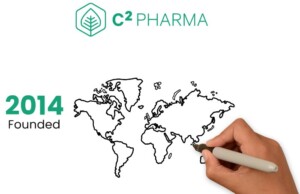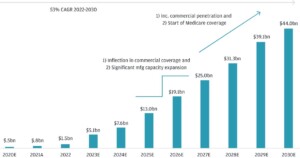Pharma and biotech companies are increasingly outsourcing production to reliable contract development and manufacturing organisations (CDMOs).
Tech Transfers are critical factor in these partnerships to be successful in developing, manufacturing and managing risk associated with moving manufacturing between sites.
What is a technology transfer?
In the pharmaceutical industry a technology transfer -more commonly known as a tech transfer – is a series of knowledge transfers on a drug product and its established manufacturing processes from development to commercial production.
The ICH Q10 guidance explains the purpose of technology transfer as follows:
The goal of technology transfer activities is to transfer product and process knowledge between development and manufacturing, and within or between manufacturing sites to achieve product realisation. This knowledge forms the basis for the manufacturing process, control strategy, process validation approach, and ongoing continual improvement.

Source: Atos
It can also mean knowledge transfer about existing products from one manufacturing site to another by a facility change, a company merger, an acquisition, or a shift to a contract manufacturer (CMO).
Expertise required in tech transfer
Technology transfer requires a diverse set of expertise. Here are some of the key areas:
- Knowledge transfer
- Experience sharing
- Communications
- Inter and intra-company cooperation on a large scale.
EXPERT ADVICE
Document everything for a smooth tech transfer
In a recent episode of the PharmaSource podacast Bernardo Estupiñán shared his advice on how to manage a Tech Transfer. He explained that while CMOs will contractually need to agree to transfer any activity, they may not make it easy.
“There’s always a lot of resistance to tech transfers, especially if it’s external” say Bernardo, so make sure to get ahead of it.
“They will not want to have a technical person from the other CMO in their facility spilling their secrets! You don’t have somebody from Pepsi Cola coming and doing a transfer at Coca Cola!”
It is critical to make sure that your process and information is extremely robust, so that anybody could take it and adapt into the new facility without a problem. “Otherwise you will forced to spend time reinventing the processes again.” says Bernardo.
Listen to full podcast below:
How to manage a Tech Transfer
The success of technology transfer hinges on several elements, notably the foresight to identify potential risks and the strategic planning to address them. This ensures the team’s readiness to handle all scenarios, including unexpected occurrences.
It’s essential to integrate various facets of launch readiness – such as machinery, manpower, materials, manufacturability, measurement, market, and risk mitigation – through a thorough risk management process.
There are typically 3 main stages of a tech transfer. These are as follows:
Stage 1: Defining and scoping
- Gathering knowledge to scope and establish the project’s organisation and charter
- Outlining program status and future outcomes
- Conducting gap analysis and failure modes as well as effect analysis risk assessment
- Identifying and covering long lead time items
- Defining the transfer protocol
Stage 2: Planning
- Developing a work breakdown structure and preliminary schedule
- Refining transfer protocols by respective parties
- Outlining critical milestones
- Gathering resource estimates
- Determining the most suitable course of transfer based on the outcome of risk assessment
- Assessing the robustness of scaling processes
- Developing risk management plans
Stage 3: Execution
- Tracking and managing the project by program team
- Collecting status data
- Analysing variances in operational data
- Identifying adaptive actions to assure quality and process optimization goals
- Reporting on project status to ensure transparency
Standardised Tech Transfer Procedures
Contract manufacturers have to be very flexible to accommodate various client needs, a standardised tech transfer procedure and common language are established to enhance the tech transfer process.
- Knowledge Transfer Package and Transfer Planning
The client should provide as detailed and complete knowledge transfer package as possible with product information
2. Detailed Assessment of the Product Technical Package
A detailed assessment of the technical package must be completed to understand the scale and equipment differences in the planning stage.
3. Analytical Method Transfers in the Early Stages of a Tech Transfer
Analytical methods are needed in the preliminary stages of a tech transfer as all the studies require certain testing to provide data and demonstrate the study results.
4. Regulatory Submission Preparation
Checklists are a great tool in helping to prepare regulatory submission packages by Regulatory Affairs and the functional teams.
5. Product Launch Preparation
The contract manufacturer should have a defined process for product launch so the team is ready for commercial supply to support the product launch.
How to accelerate the tech transfer?
Tech transfers in a highly regulated industry such as pharma can be a slow process. Here are strategies for how to accelerate time needed for a technology transfer while maintaining necessary quality.
- Digital Twin Strategy: A digital twin, a digital replica of the design space, allows companies to run a comprehensive set of virtual experiments. This enables a focused set of physical experiments to be chosen that efficiently utilise time and materials to fine-tune the design for optimum yield and quality assurance.
- Quality by Design (QbD) Framework: Following the QbD framework ensures that deep and detailed product and process knowledge is generated, evaluated, and documented throughout the whole product lifecycle.
- Dedicated Project Management Team: Establish a dedicated project management multidisciplinary team. This team will manage effectively and timely all communications between stakeholders.
- Standard Operating Procedures and Documents: Templated standard operating procedures and documents, approved by the quality team, will increase the speed, efficiency, effectiveness, and quality of technical transfer.
- Comprehensive Protocols: A comprehensive protocol coupled with carefully designed technical transfer protocols can enable a smooth technology transfer of your process.
Complexities of technology transfer
Common challenges for tech transfers include:
- Scope of Transfer: The complexity of technology transfer is determined by how much of a production chain is transferred. This could range from a single element (e.g., drug product fill and finish) to an entire process (from cell-bank manufacture to final drug product, with all the associated testing). The scope of transfer is a management decision with operational and strategic elements.
- Size of Transfer: The larger the scope, the more complex the transfer becomes. Complexity increases even more if different sections (e.g., drug substance, drug product, and analytics) are transferred from or to different sites.
- Multidisciplinary Activity: Technology transfer is a multidisciplinary activity involving diverse skills and competencies of participants, including project management, quality assurance/control (QA/QC), technical capabilities, engineering, manufacturing, and validation.
- Structural Reasons: In the biopharmaceutical industry, technology transfer is common for a number of structural reasons. These include the dichotomy between small, innovation-based drug companies and large ones able to conduct late-phase clinical development and endowed with manufacturing capacity; the high capital cost of biopharmaceutical plants, which makes contract manufacturing attractive; and the need for multiple scale-ups during a product’s life cycle.
Considerations when choosing a contract manufacturing partner
When seeking technology transfer support from a Contract Development and Manufacturing Organization (CDMO), it’s crucial to verify the CDMO’s track record and the strength of its project management and technical infrastructure.
This validation is key to ensuring the CDMO’s capability to comprehend and meet project specifications, manage potential risks, and deliver the project promptly and accurately on the first attempt.
Here are some areas to consider when planning to transfer to a contract manufacturer:
1. Geographic footprint
Gaining a comprehensive understanding of the market landscape goes beyond simply securing global manufacturing capacity as that is merely a tactical aspect. Your manufacturing partner should fully comprehend your campaign’s terrain and the broader landscape of your drug marketing strategy
2. Technology
The relevant technology surpasses the latest spray dryer or bioreactor. Your partner’s capabilities limit the potential of the equipment used. It is important to review your partner’s tech transfer performance against their ability to:
- Recognise and leverage economies of scale while prioritising safety and sustainability
- Deliver processing capabilities that are robust, reliable and validated, ensuring consistent and high-quality outcomes
3. Regulatory compliance
Evaluating a CDMO partner’s potential requires a thorough understanding of their ability to proactively maintain regulatory compliance. Consider the following key indicators:
- Dossier requirements and the capability to harmonise components for use in multiple markets
- Strong cGMP manufacturing operations with a demonstrated history of continuous improvement
- Effective documentation and filing data management with a focus on integrity • Regulatory responsiveness and efficiency in filing processes
- Established relationships with regulatory bodies and a comprehensive understanding of their requirements
4. Personnel
Having the right people involved is crucial for managing successful tech transfers between organisations. Look for external partners employing talented individuals with proficient project management and operational skills as well as scientific expertise.








